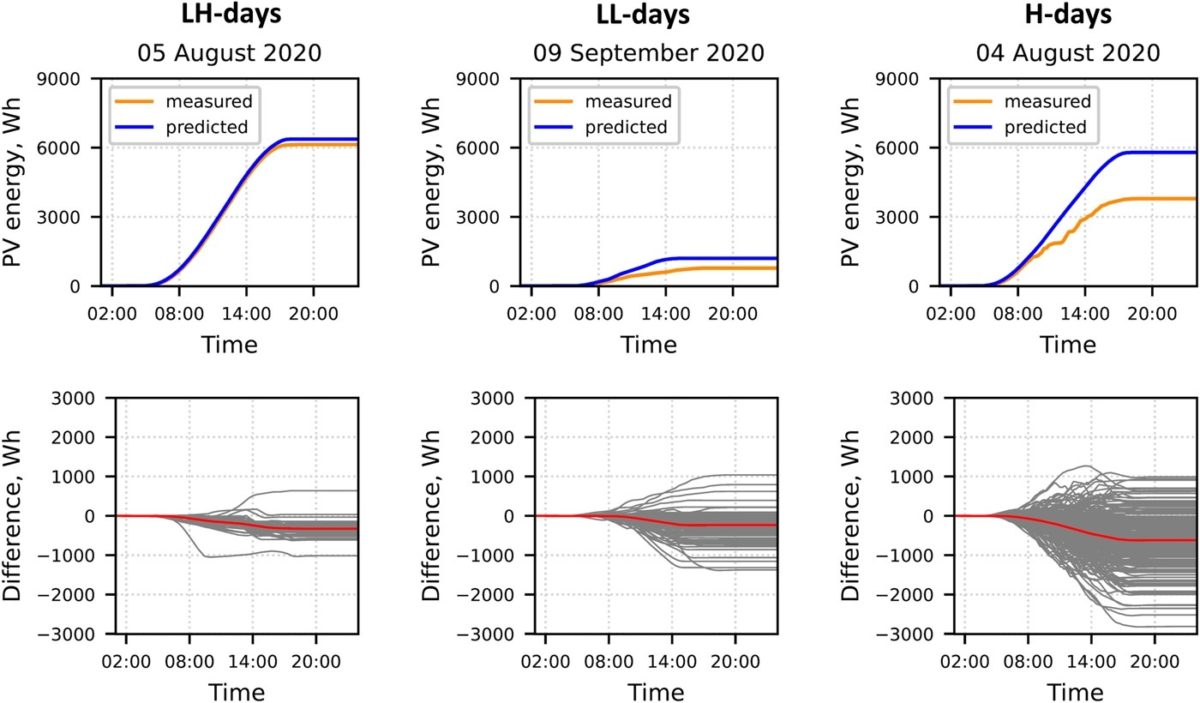From pv magazine Global
A group of scientists from the DLR Institute of Networked Energy Systems in Germany has proposed to utilize a three-step method to quantify energy fluctuations in PV systems in an effort to estimate the flexibility potential of buildings and city districts hosting solar arrays.
The novelty of the methodology consists of providing not only the amount of energy that must be reserved or shifted locally for balancing purposes within a day, but also the required duration of energy reserving or shifting.
“The developed method distinguishes between power and energy fluctuations of PV systems,” the academics said. “The quantification of the power fluctuations only requires technical characteristics and time series with the measured power values of the PV systems.”
The proposed method is based on analyses of the so-called power ramp, which the researchers describe as the difference in power values between two successive points in time in a PV system. The three steps consist of the classification of the days with PV generation in the “low variability” and “high variability,” the computation of the distribution of PV power ramps, and the calculation of PV energy fluctuations.
This method computes power ramps at each point in time and the energy fluctuations on a daily basis. “Because the PV power prediction uncertainties are summed over the day, the computed daily energy fluctuations can be compared to the capacity of the local flexibility sources to estimate whether the available flexibility sources have a sufficient amount of energy to balance the daily energy fluctuations,” they further explained.
The research group tested its method in seven PV systems with a capacity ranging from 1.2 kW to 100 kW, located in either northern or southern Germany. Through this analysis, it found that days with high variability and those with low variability feature characteristic distributions of PV power ramps. “The computed distributions of the power ramps enable the magnitudes of power fluctuations that arise most frequently in a given PV system to be estimated,” it said. “In other words, based on the computed distributions, the probability of any power ramp of any PV system can be determined for the given variability class.”
The researchers said the testing showed that PV installations located in the same area should have similar distributions of power ramps. “However, all of the investigated PV systems are located in Germany in western Europe. It may be academically interesting to apply the developed method to PV systems in other locations with apparently differing climate and weather conditions,” they stated.
The researchers also claim the new approach can support adequate dimensioning of the PV system in buildings and be integrated into energy management systems for scheduling the operation for the next day.
They described the novel methodology in the paper “Quantifying power and energy fluctuations of photovoltaic systems,” published in Energy Science & Engineering. “The proposed methodology for quantifying PV energy fluctuations can be applied to any PV system if solar radiation predictions for its particular location and technical parameters are available,” they concluded.
This content is protected by copyright and may not be reused. If you want to cooperate with us and would like to reuse some of our content, please contact: editors@pv-magazine.com.









By submitting this form you agree to pv magazine using your data for the purposes of publishing your comment.
Your personal data will only be disclosed or otherwise transmitted to third parties for the purposes of spam filtering or if this is necessary for technical maintenance of the website. Any other transfer to third parties will not take place unless this is justified on the basis of applicable data protection regulations or if pv magazine is legally obliged to do so.
You may revoke this consent at any time with effect for the future, in which case your personal data will be deleted immediately. Otherwise, your data will be deleted if pv magazine has processed your request or the purpose of data storage is fulfilled.
Further information on data privacy can be found in our Data Protection Policy.